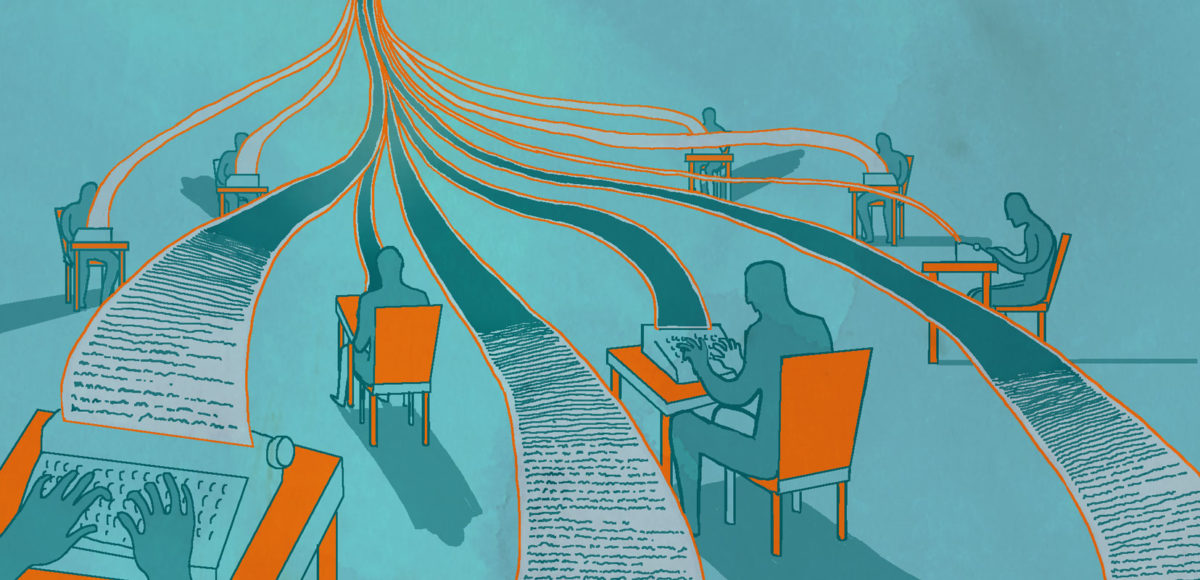by Paul Ostwald
The Annual Digital News Initiative Report of Oxford’s Reuters Institute tracks trust in media. This year, the value reached an all-time low. Only 42% of respondents across the globe trust media, ranging from 59% in Finland to 22% in Korea. It’s no news: journalism has a trust issue.
The fundamental problems affecting confidence are deeply rooted and most of them remain unresolved. Accusations of ‘fake news’ and ever-quickening news cycles have created uncertainty among readers. Besides the crumbling relationship between readers and journalists, the unsustainability of revenue models is the second issue affecting the industry.
Whereas the New York Times and Washington Post sell more subscriptions than ever before, most media outlets can no longer rely on a mix of subscriptions and ads to pay their bills. Facebook and Google now dominate the ad market as readers now predominantly consume media through their platforms. So many papers are forced to close down that a website, Newspaper Death Watch, has started tracking the death of newspapers.
While some thus proclaim the “end of journalism”, others are more hopeful. Blockchain enthusiasts argue that the answer to journalism’s problems might be hidden in the decentralized ledger. It functions like a huge excel spreadsheet with information stored in every cell that every user can view.
Accusations of ‘fake news’ and ever-quickening news cycles have created uncertainty among readers. Besides the crumbling relationship between readers and journalists, the unsustainability of revenue models is the second issue affecting the industry.
In theory, as Colombia University professor Bernat Ivancsics notes, the technology offers solutions to the two pressing points stated above. First, news outlets could save the metadata of all articles – such as publication-dates, bylines, location, and more – in the decentralized ledger. Such an approach would make verifying sources of articles much easier. Surely, if each article, podcast, and picture could be traced back to its origins, readers would trust the sources more. How far we would take this – for example, whether it would include the journalist’s own research material – is up to debate. Radical transparency comes with its own problems, especially in journalism.
On the second issue of finding new systems to finance journalism, the oft-bemoaned anonymity of blockchain-based financial transactions could be an advantage. In countries where financially supporting critical news outlets can have serious repercussions, it would open up a new channel for untraceable funding. It could also recreate old concepts of ownership like a cooperative, where readers can buy shares, i.e. tokens, in the news outlet. Such an approach secures funding and increases trust.
Yet, few news outlets have attempted to unite blockchain and journalism. The most prominent one, Civil, was hailed as a promising solution. A mixture of newsroom, platform, and social network, it would strengthen independent publishers, support freelance journalists, and create a more communal experience of reading and discussing articles. However, when it went public and offered its coins, i.e. shares, buyers weren’t interested. Civil’s first attempt ended in disaster.
The online journalism community is still divided on why this happened. They’re also still uncertain about what Civil was trying to do. Even those who spend their days in the blockchain maze have admitted that they have no clue.
And that is the problem. Civil’s model is inscrutable to most readers. Civil’s customers aren’t experts; they’re average newsreaders, the majority of whom have never interacted with the blockchain. Civil hasn’t yet provided a solution that users feel comfortable buying-in to. The initial idea, to create a trusted environment for articles, failed. As long as we don’t trust the blockchain, it has few chances to regenerate trust in journalism.
As long as we don’t trust the blockchain, it has few chances to regenerate trust in journalism.
Civil is trying to do journalism a service, but it might have overestimated the confidence and knowledge of the average reader. In an interview with the New York Times, Civil’s CEO Matthew Iles acknowledged the gap. “We sometimes get asked, are we too early? And the answer is absolutely yes. But you are only ever going to be too early or too late.”
They’re currently planning a comeback with a new model – hopefully this time one we can understand.

 | Technology, AI and ethics.
| Technology, AI and ethics.

